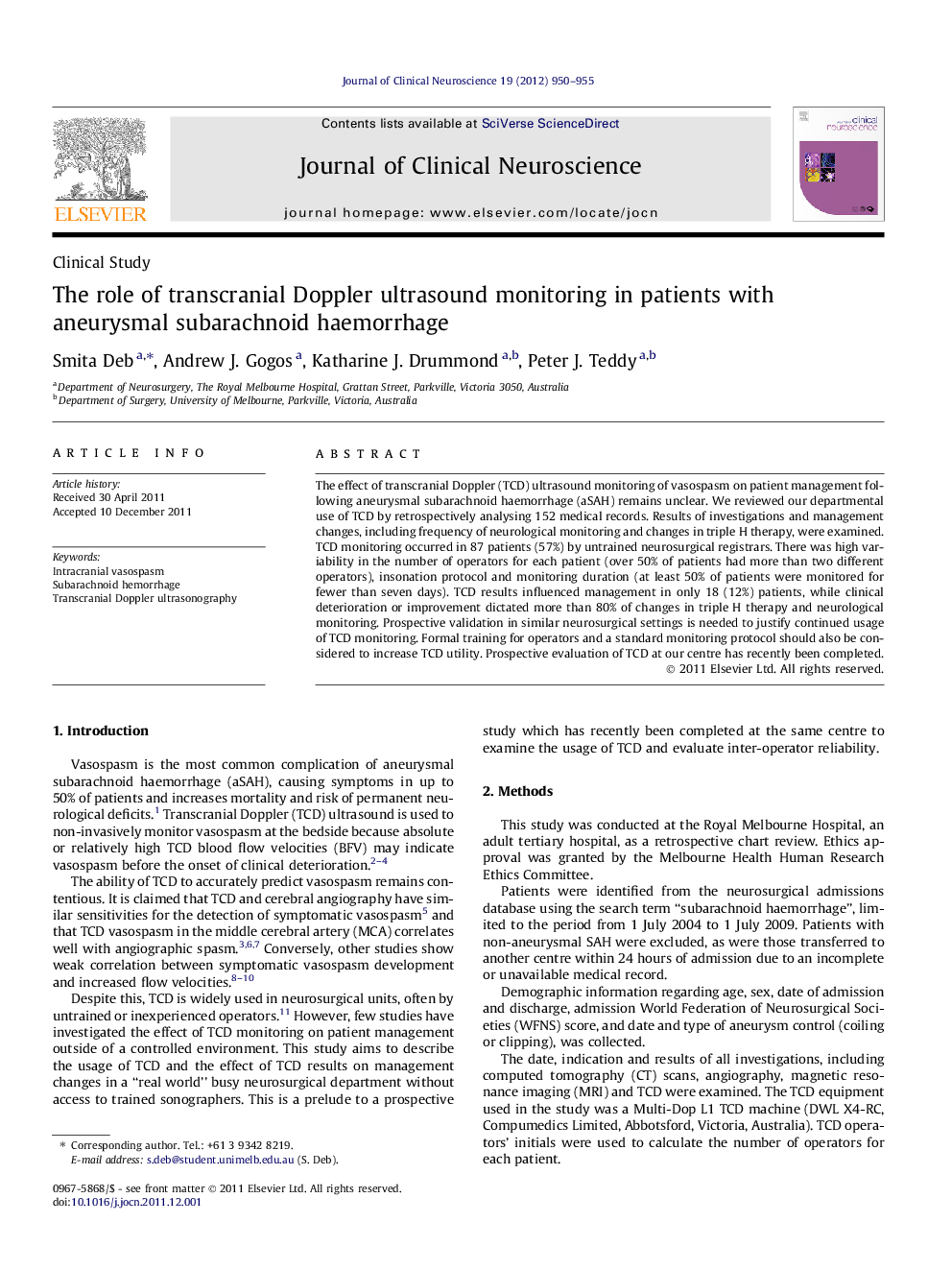| Article ID | Journal | Published Year | Pages | File Type |
|---|---|---|---|---|
| 3060339 | Journal of Clinical Neuroscience | 2012 | 6 Pages |
The effect of transcranial Doppler (TCD) ultrasound monitoring of vasospasm on patient management following aneurysmal subarachnoid haemorrhage (aSAH) remains unclear. We reviewed our departmental use of TCD by retrospectively analysing 152 medical records. Results of investigations and management changes, including frequency of neurological monitoring and changes in triple H therapy, were examined. TCD monitoring occurred in 87 patients (57%) by untrained neurosurgical registrars. There was high variability in the number of operators for each patient (over 50% of patients had more than two different operators), insonation protocol and monitoring duration (at least 50% of patients were monitored for fewer than seven days). TCD results influenced management in only 18 (12%) patients, while clinical deterioration or improvement dictated more than 80% of changes in triple H therapy and neurological monitoring. Prospective validation in similar neurosurgical settings is needed to justify continued usage of TCD monitoring. Formal training for operators and a standard monitoring protocol should also be considered to increase TCD utility. Prospective evaluation of TCD at our centre has recently been completed.
